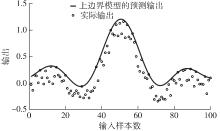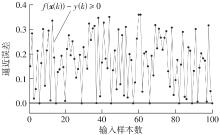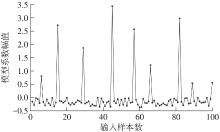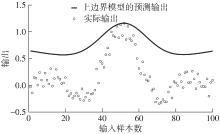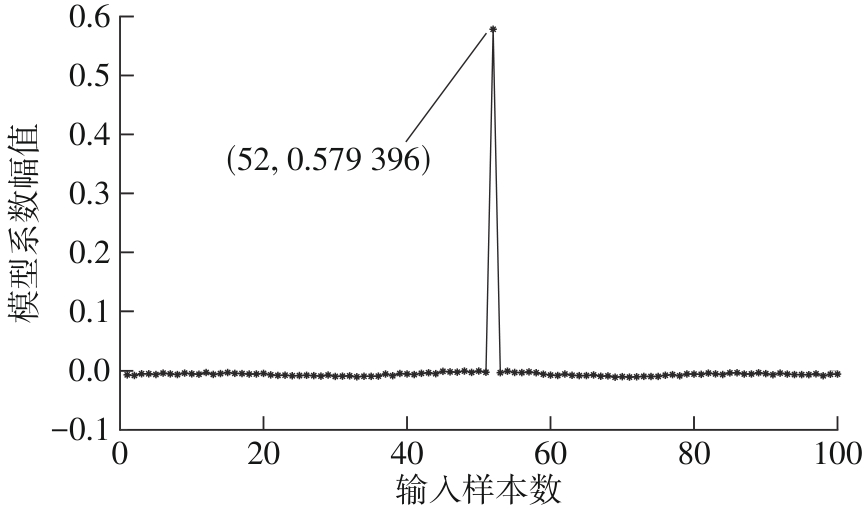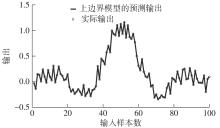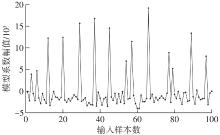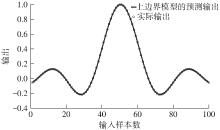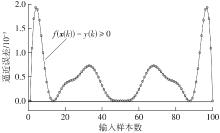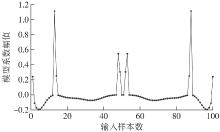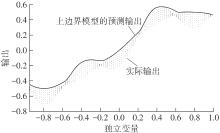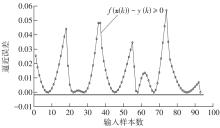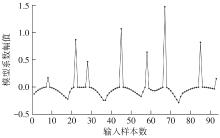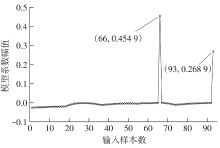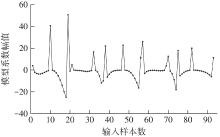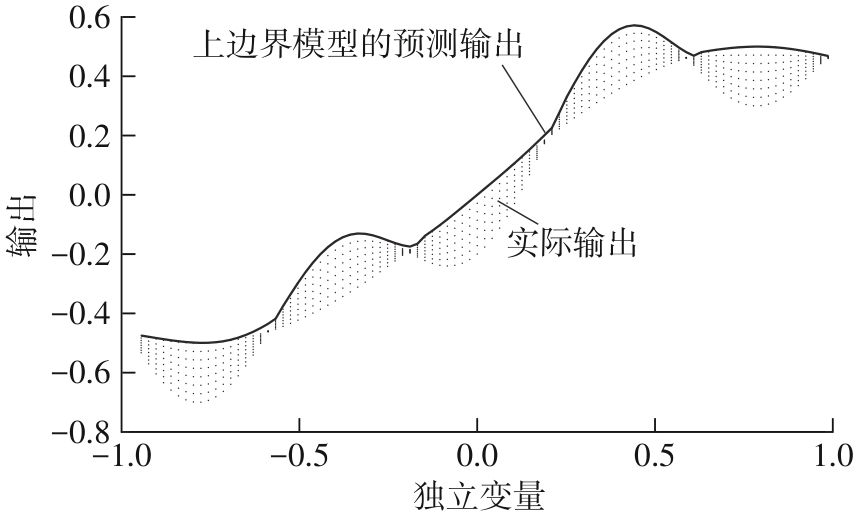| 1 |
SHANG D Y, LI X P, YIN M,et al .Neural network model identification control of dual-inertia system with a flexible load considering payload mass variation and nonlinear deformation[J].Engineering Applications of Artificial Intelligence,2024,128:107503/1-19.
|
| 2 |
MENG X, ZHANG Y, QUAN L,et al .A self-organizing fuzzy neural network with hybrid learning algorithm for nonlinear system modeling[J].Information Sciences,2023,642:119145/1-20.
|
| 3 |
LI J, SONG G, YAN J,et al .Data-driven fault detection and classification for MTDC systems by integrating HCTSA and soft max regression[J].IEEE Transactions on Power Delivery,2022,37(2):893-904.
|
| 4 |
FANG X, QU J, LIU B .Overcoming limited fault data:intermittent fault detection in analog circuits via improved GAN[J].IEEE Transactions on Instrumentation and Measurement,2024,73:1-11.
|
| 5 |
哀微,朱学峰 .基于单边SPSA的动态偏差数据驱动控制算法[J].华南理工大学学报(自然科学版),2012,40(9):81-86,92.
|
|
AI Wei, ZHU Xue-feng .One-sided SPSA-based data-driven control algorithm with dynamic deviations[J].Journal of South China University of Technology (Natural Science Edition),2012,40(9):81-86,92.
|
| 6 |
李中奇,周靓,杨辉 .高速动车组数据驱动无模型自适应积分滑模预测控制[J].自动化学报,2024,50(1):194-210.
|
|
LI Zhongqi, ZHOU Liang, YANG Hui .Data-driven model-free adaptive integral sliding mode predictive control for high-speed electric multiple unit[J].Acta Automatica Sinica,2024,50(1):194-210.
|
| 7 |
BOUBOULIS P, THEODORIDIS S, MAVROFORAKIS C,et al .Complex support vector machines for regression and quaternary classification[J].IEEE Transactions on Neural Networks and Learning Systems,2015,26(6):1260-1274.
|
| 8 |
黄伟,黄遥,牛继强,等 .基于多尺度LBP和复合核的高光谱图像分类方法[J].信阳师范学院学报(自然科学版),2021,34(2):300-307.
|
|
HUANG Wei, HUANG Yao, NIU Jiqiang,et al .Hyperspectral image classification based on multi-scale local binary pattern and composite kernel function[J].Journal of Xinyang Normal University(Natural Science Edition),2021,34(2):300-307.
|
| 9 |
BARANYI P .How to vary the input pace of a T-S fuzzy model: a TP model transformation-based approach[J].IEEE Transactions on Fuzzy Systems,2022,30(2):345-356.
|
| 10 |
KALTWANG S, TODOROVIC S, PANTIC M .Doub-ly sparse relevance vector machine for continuous facial behavior estimation[J].IEEE Transactions on Pattern Analysis and Machine Intelligence,2016,38(9):1748-1761.
|
| 11 |
WANG X, JIANG B, WU S .Multivariate relevance vector regression based degradation modeling and remaining useful life prediction[J].IEEE Transactions on Industrial Electronics,2021,69(9):9514-9523.
|
| 12 |
HAN H, LIN Z, QIAO J .Modeling of nonlinear systems using the self-organizing fuzzy neural network with adaptive gradient algorithm[J].Neurocomputing,2017,266(29):566-578.
|
| 13 |
VAPNIK V .An overview of statistical learning theory[J].IEEE Transactions on Neural Networks,1999,10(5):988-999.
|
| 14 |
BURGES C .A tutorial on support vector machines for pattern recognition[J].Data Mining and Knowledge Discovery,1998,2(2):121-167.
|
| 15 |
SUYKENS J, VAN GESTEL T, DE BRABANTER J .Least squares support vector machines[M].Singapore:World Scientific,2002.
|
| 16 |
SUYKENS J A K, VANDEWALLE J .Least squares support vector machine classifiers[J].Neural Processing Letter,1999,9(3):293-300.
|
| 17 |
GOETHALS I, PELCKMANS K, SUYKENS J .Subspace identification of Hammerstein systems using least squares support vector machines[J].IEEE Transactions on Automatic Control,2005,50(10):1509-1519.
|
| 18 |
BAKO L, MERCERE G, LECOEUCHE S .Recursive subspace identification of Hammerstein models based on least squares support vector machines[J].IET Control Theory & Applications,2009,3(9):1209-1216.
|
| 19 |
LIU X, FANG H, CHEN Z .A novel cost function based on decomposing least-square support vector machine for Takagi-Sugeno fuzzy system identification[J].IET Control Theory & Applications,2014,8(5):338-347.
|
| 20 |
ZHENG W, WANG C, LIU D .Combustion process modeling based on deep sparse least squares support vector regression[J].Engineering Applications of Artificial Intelligence,2024,132:107869/1-14.
|
| 21 |
ZHANG H, WU Q, LI F .Application of online multitask learning based on least squares support vector regression in the financial market[J].Applied Soft Computing,2022,121:108754/1-26.
|
| 22 |
KAMM S, SUSHMA S, TIMO M .A survey on machine learning based analysis of heterogeneous data in industrial automation[J].Computers in Industry,2023,149:103930/1-14.
|
| 23 |
LI H, ZHANG Z, LI T .A review on physics-informed data-driven remaining useful life prediction:challenges and opportunities[J].Mechanical Systems and Signal Processing,2024,209(1):111120/1-32.
|
| 24 |
刘道华,冯宸,赵岩松,等 .多尺度特征融合网络的磁共振快速重建方法[J].信阳师范学院学报(自然科学版),2023,36(1):127-131.
|
|
LIU Daohua, FENG Chen, ZHAO Yansong,et al .A fast MRI reconstruction method based on multi-scale feature fusion network[J].Journal of Xinyang Normal University (Natural Science Edition),2023,36(1):127-131.
|
| 25 |
LI S, FANG H, LIU X .Parameter optimization of support vector regression based on sine cosine algorithm[J].Expert Systems with Applications,2018,91:63-77.
|
| 26 |
TIPPING M .Sparse Bayesian learning and the re-levance vector machine[J].Journal of Machine Learning Research,2001,1(3):211-244.
|
